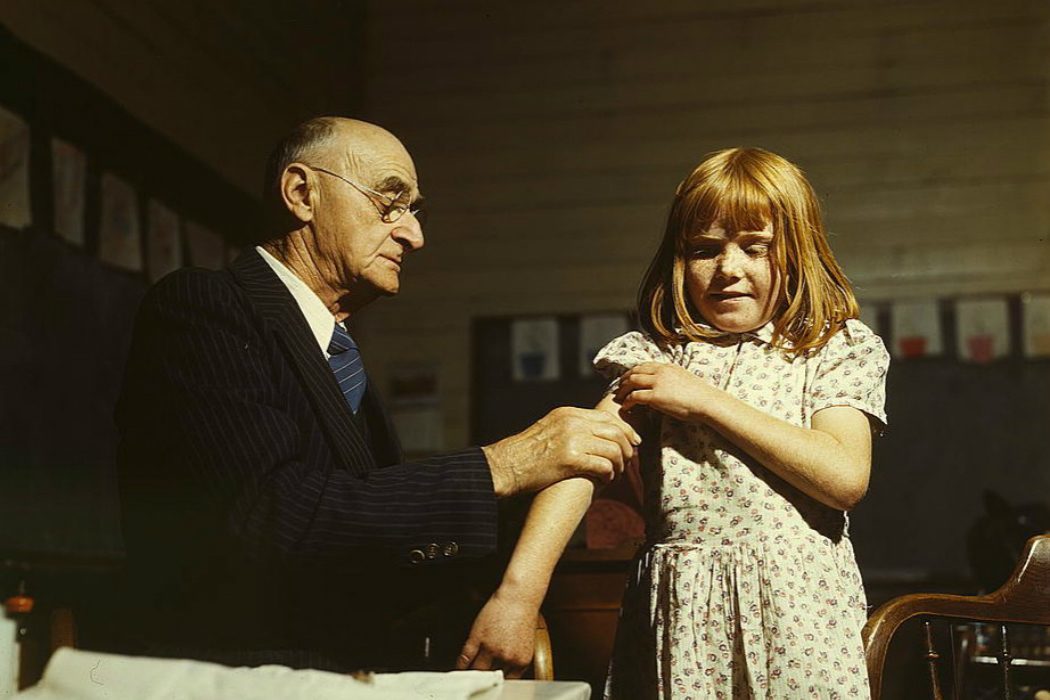In The News
As we’ve mentioned recently, a human body is like an ecosystem of bacteria living in harmony, many of which help you out. Your immune system develops through exposure to germs; we mimic this effect with vaccines composed of harmful viruses. Or, in the case of autoimmune disorders (an immune system attacking its body’s own healthy cells), your immune system gets confused by an overprotective, sterile upbringing.
As Moises Velasquez-Manoff tells us in this weekend’s New York Times Sunday Review, your immune system’s efficacy can depend on your social class and the ecosystems you’re exposed to:
In order to develop properly, the hygiene hypothesis holds—to avoid the hyper-reactive tendencies that underlie autoimmune and allergic disease—the immune system needs a certain type of stimulation early in life. It needs an education…
Lifestyle seems to be the major determinant—how the way you live guarantees (or doesn’t) exposure to a rich variety of microbes that favorably sculpt the immune system.
Velasquez-Manoff says that there are windows in a human’s life—infancy and childhood—where exposure is a necessary part of regulating our lifelong immunities. There’s even research into in vitro inoculation, and exposing pregnant mothers to an array of infections.
Further Reading in JSTOR
Charles Schmidt, writing a succinct summary of the research on environmental factors in autoimmune occurrence, suggests that what’s needed is a registry of the afflicted, so scientists can pinpoint “hot spots.” Looking closer at ecosystems, genetic similarities, population lifestyles, and other interactions could give us a better idea of which diseases are comorbid, and what those causal links might be.
“We don’t have anything like [a national cancer registry] for autoimmune disease,” Miller says. The consequence, he adds, is that whereas cancers are often addressed as a single entity, autoimmune illnesses are put in disease-specific silos, which prevents more efficient use of research dollars.
According to Rose, better diagnostics also are a major priority. Today, he says most people with autoimmune diseases aren’t diagnosed until it’s already late in the disease process. “We have good evidence that these illnesses can go on for years before they become clinically evident,” Rose says.
Schmidt says hormones, exposure to toxic chemicals, childhood eating habits, and even stress can trigger various autoimmune symptoms, where only genetic predisposition existed before.
***
A few years later, Susan Gaidos writes in Science News of a promising solution: take an infected person’s blood and “refurbish” their white blood cells to attack cancer (or not attack healthy tissues), then inject them back into the fight. It’s a complicated process, but it essentially creates a personalized, on-the-fly vaccine, and a way to make up for the body’s confused immune reactions.
Scientists are employing the technique now in organ transplants, where a person’s immune system can reject a “foreign” but beneficial entity:
To retrain the body’s peacekeeping force, Bluestone’s group focuses on a population of cells called Foxp3-expressing Tregs. These cells are master regulators of the immune system, Bluestone says.
Foxp3 Tregs squelch the action of other [white blood] cells directly, but are also appealing because of a two-pronged trait called bystander suppression. First, the cells create an overall suppressive environment in areas where they do their work. As a result, immune cells that recognize a foreign antigen such as a transplanted organ learn to make peace with the foreigner. Second, the Foxp3 Tregs convert other cells in the area into peacekeepers.
“You end up with this situation where you not only suppress locally, but you turn other cells into regulatory cells that perpetuate and amplify the effect of the Tregs,” Bluestone says.
Gaidos tells us that researchers are still unsure how to control these “warrior” cells, and whether there will be consequences to introducing them en masse into a person’s body.
***
Another line of inquiry comes from a group of researchers in the UK studying mice. They found mothers who had successfully fought off certain viruses passed on a higher immunity to their children, who were able to survive their own exposure. The really interesting part is that those child mice also exhibited markedly different social behaviours. They participated less in social dominance displays, becoming less upset or emotional when challenged:
The sons of the directly infected females did not display lower aggression as adults, but nevertheless differed in their hormonal response to novel social environments, decreasing instead of increasing testosterone production upon social housing.
Testosterone in male adult mice is associated with social dominance, aggression, territory acquisition and maintenance, and consequently increased access to mating opportunities. However, there is evidence that the benefits of dominance are counterbalanced by costs associated with reduced resistance to infection.
This behavioral change could be due to a few things: one, those mother mice spent more time taking care of their babies after birth, which could have any number of effects. The researchers hypothesized that the mothers took better care of their babies because of their own recent sickness, intuiting that their environment was more infectious. Perhaps that “intuition” transmitted to the children, who then became more self-protective.
This study obviously has implications for children even in prenatal stages: mothers can pass on healthy, well-rounded immune systems to their kids. But the other result is certainly notable, too…







